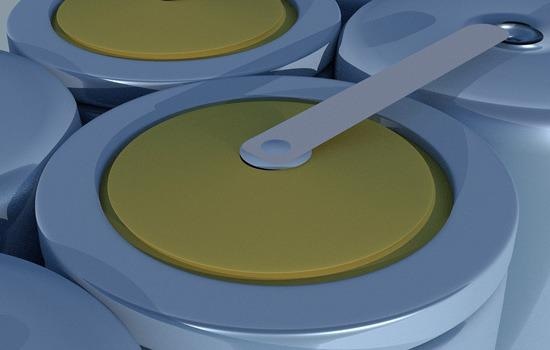Reviewed by Alex SmithAug 17 2021
In the near future, lithium-ion batteries are all set to play a leading role in electric vehicles and other applications. However, the existing battery materials lag when it comes to safety and performance and have been hampering the next generation of high-performance batteries.
 Scientists hope to turn these new anions into thermally stable, non-flammable liquid salts, making them beneficial for batteries operating at high temperatures. Image Credit: Monash University.
Scientists hope to turn these new anions into thermally stable, non-flammable liquid salts, making them beneficial for batteries operating at high temperatures. Image Credit: Monash University.
Notably, electrolyte development is the main difficulty for higher power batteries ideal for energy storage and vehicle applications.
Scientists from the Monash University School of Chemistry, under the guidance of Professor Doug MacFarlane and Dr Mega Kar, collaborated with local company Calix Ltd and have found alternative solutions to overcome this difficulty with new chemistry.
The lithium salt currently being used in lithium-ion batteries is lithium hexafluorophosphate, which poses a fire and safety hazard as well as toxicity. In smaller portable devices, this risk can be partially mitigated.
Douglas MacFarlane, Study Corresponding Author and Professor, School of Chemistry, Monash University
“However, in a large battery pack, such as electric vehicle and outdoor grid scale energy storage systems, the potential hazard is much intensified. Higher voltage and power batteries are also on the drawing board but cannot use the hexafluorophosphate salt,” added MacFarlane.
In a new study, the chemists explain a novel lithium salt that may help to overcome the difficulties of electrolyte design and serve as an alternative to the hexafluorophosphate salt. The study has been published in the Advanced Energy Materials journal.
Our aim has been to develop safe fluoroborate salts, which are not affected even if we expose them to air. The main challenge with the new fluoroborate salt was to synthesize it with battery-grade purity which we have been able to do by a recrystallization process.
Dr Binayak Roy, Study Lead Author, School of Chemistry, Monash University
“When put in a lithium battery with lithium manganese oxide cathodes, the cell cycled for more than 1000 cycles, even after atmospheric exposure, an unimaginable feat compared to the hyper-sensitive hexafluorophosphate salt,” added Roy.
Upon integration with a novel cathode material in a high voltage lithium battery, this electrolyte highly surpassed the conventional salt, noted Roy. Furthermore, the salt was found to be highly stable on aluminum current collectors at higher voltages, as this is the criteria needed for next-generation batteries.
The study is an outcome of a collaborative measure within the Australian Research Council (ARC) Training Centre for Future Energy Storage Technologies. StorEnergy is a federally supported Industry Transformation Training Center with the goal of training the next generation of workers inside the Australian energy industry and boost collaboration of industry-university.
According to StorEnergy Director Professor Maria Forsyth from Deakin University, “This is a wonderful example of how industry–university collaborations supported through government research funding can support Australia’s leadership in next-generation safe battery technologies.”
The study was performed in association with Calix Ltd, a Victoria/NSW-based company that manufactures high-quality manganese-based battery materials from Australian sourced minerals. The study will help Calix to reach its objective of large-scale fabrication of Australian-based Li-ion batteries, where the aim is grid-scale energy storage systems for rollout in Australia.
Dr Matt Boot-Handford, General Manager for R&D at Calix, stated, “Calix is developing a platform technology to produce high-performance, cost-competitive battery materials in Australia. We are working closely with our research partners at Monash and Deakin through StorEnergy to support the development of electrolyte systems that are compatible with Calix’s electrode materials.”
“The superior electrochemical performance and stability demonstrated by the Monash team’s new electrolyte system paired with Calix’s lithium manganese oxide electrode material is an exciting and important milestone that brings us one step closer to making batteries featuring Calix next-generation electrode materials a commercial reality,” added Dr Boot-Handford.
In the near future we hope to turn these new anions into thermally stable, non-flammable liquid salts, making them beneficial for batteries operating at high temperatures. With the current climate conditions, designing such battery technologies with safety and stability will be important in implementing a sustainable grid-scale energy solution in Australia.
Mega Kar, Study Corresponding Author, School of Chemistry, Monash University
Journal Reference:
Roy, B., et al. (2021) Lithium Borate Ester Salts for Electrolyte Application in Next-Generation High Voltage Lithium Batteries. Advanced Energy Materials. doi.org/10.1002/aenm.202101422.